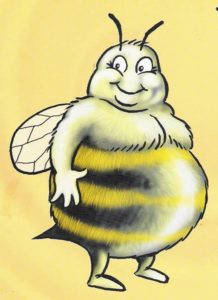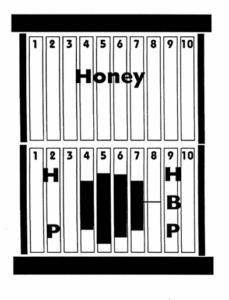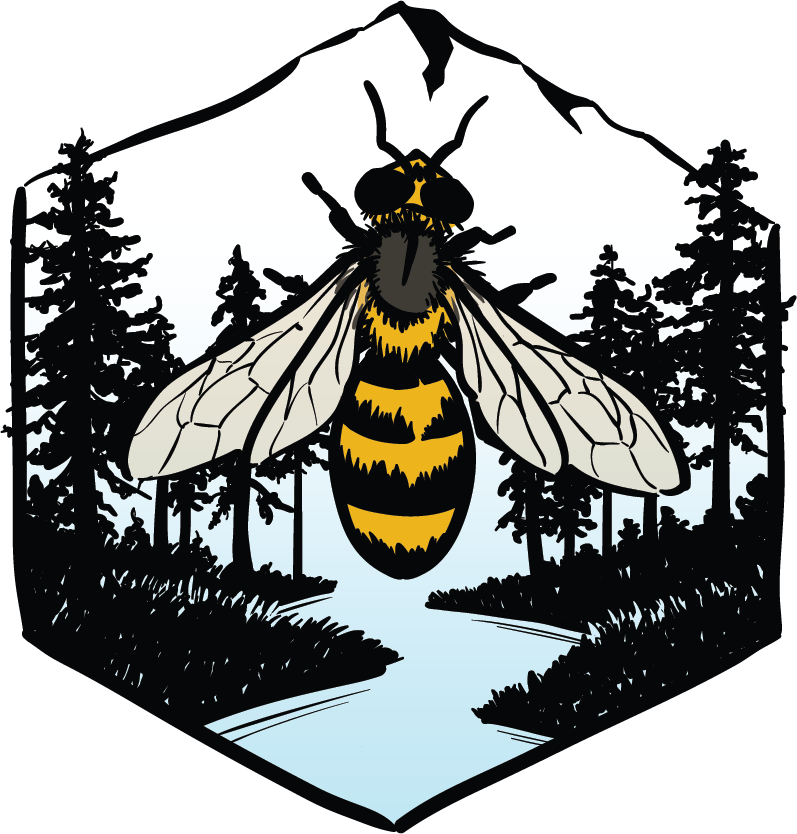 Feeding bees in the fall is unquestionably a way to make the difference whether a colony survives overwinter or not. When colonies are light on food stores, feeding a heavy sugar syrup or not extracting capped honey can improve winter survival. It is the best management option to insure the proper fall configuration and promote raising FAT fall bees. To raise Fat bees the colonies need to be FAT with honey.
Feeding bees in the fall is unquestionably a way to make the difference whether a colony survives overwinter or not. When colonies are light on food stores, feeding a heavy sugar syrup or not extracting capped honey can improve winter survival. It is the best management option to insure the proper fall configuration and promote raising FAT fall bees. To raise Fat bees the colonies need to be FAT with honey.
For improved wintering success, it is important to ensure the brood nest is situated low in the colony by the fall rains. Ideally, an ample ceiling of honey/syrup will be stored by the bees above the brood nest enabling them to eat their way up through the overhead stores as winter progresses. If your brood nest is still sitting high up in the top box by mid-September, I recommend beginning supplemental feeding soon.
Different individuals have different ways to feed and feed different materials. Basically the BEST way to feed is the one you find useful. Many feed sugar syrup in a recycled jar that has a removable lid. Feeders should be placed above the inner cover hole, with or without a piece of screen material, with an empty shell around the feeder. If you don’t use an inner cover the feeders should be placed directly on the top bars. It is easy to check and refill/replace when the bees have taken down the contents.
Some feed bees in a common feeder in the apiary (feed lot feeding). I don’t like that method and it is not a good method for urban beekeepers. I like to drill a hole the size of a plastic jar and put the feeder jar outside the lid. I can remove it and replace it with a filled jar before the bees have a chance to occupy the space of the hole.
Does it make a difference what sugar is fed? Last year pnwhoneybeesurvey (www.pnwhoney besurvey.com) data says there was no difference in improvement in loss percentage whether frames of honey, sugar syrup, drivert or fondant was fed. For latest fall (and earliest spring) feeding, generally a clean, non-contaminated sugar is recommended. Fall feeding of protein does not make for a larger colony nor improve survival. However, since the bees do not store the artificial diet material, they will use it to rear fall bees and conserve pollen stores (i.e. bee bread) in a colony. Fall protein feeding can help insure FAT bees.
We do recommend that the syrup be mixed heavy in fall feedings. This is to stimulate storage of the material vs stimulating of brood rearing. If “junk” honey still in a frame is to be fed, score the cappings to make a “mess” to stimulate the bees to move it into their storage pattern. The scored honey can be put above the inner cover or below the brood boxes (this will require some heavy lifting to place and then remove when emptied by the bees). If you have liquid honey to feed, dilute it and feed in a container feeder within the hive. Be careful when feeding in fall or during a drought so that you do not promote robbing behavior. Reduce entrances and avoid spilling honey/syrup outside of colonies.
Should food stimulants (such as Honey-Bee-Healthy, Amino Acid boosters, micro/Pro-Biotics) be used when feeding in the fall? Although they can be good additions to entice the bees into quickly emptying feeders and stimulate healthy colonies, some advocate avoiding adding a food simulant in the fall. Others believe it can make a difference in winter survival. New additives seem to frequently come on the market, but most, adapted from feeding other livestock, have not been extensively or independently tested for effectiveness or potential harmful effects. If you are debating the value of such additives I suggest you try splitting your colonies into two lots, feeding one and not the other and see if it results in a difference.
Should you add vinegar or an acid to syrup to bring the pH down to around 4.7? At one time additives to avoid sugar spoilage and mold growth in feeders was the standard recommendation. Those who feel it important to create a more acidic syrup, thought to better duplicate flower nectars (which have a wide pH range depending upon the flower and plant growing conditions) may help the bees intestinal function. Once again there is not a lot of evidence to support their claimed benefit but they apparently are nto harmful Avoid toxic sugars (such as milk sugars lactose and galactose) and avoid salt as a higher salt content quickly turns bees off.
Will feeding sugar in the fall make a difference? Those who didn’t feed (see my report in the www.pnwhoneybeesurvey.com website) lost more colonies than those who did feed. The best advice – try it, you might like the improvement in overwintering in your colonies. Ideal fall Configuration: Brood chamber of two boxes, with brood compact on 3-5 frames in lower box or between the two boxes by mid-October and top box (standard or median super) full or nearly full of honey. H= honey, P=Pollen, B= Brood – illustration = 2 standard 10-frame langstroth boxes 
